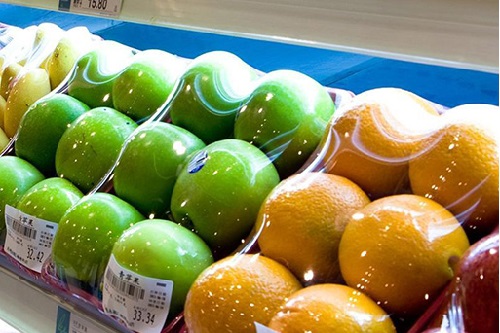Food packaging plays a critical role in ensuring product safety, extending shelf life, and enhancing consumer convenience. Among the many packaging formats available, lidding film food packaging has become one of the most widely used solutions in the global food industry. From ready-to-eat meals and dairy cups to fresh produce and frozen foods, lidding films provide a protective yet functional barrier that meets modern requirements for safety, sustainability, and brand appeal.
What Is Lidding Film Packaging?
Lidding film packaging refers to the thin, flexible film layer used to seal trays, cups, tubs, and containers in food packaging. It typically serves as the “lid” that protects food from contamination, moisture loss, and oxidation while also enabling consumer-friendly features such as easy peelability or reclosability.
Key functions include:
- Hermetic sealing: for food safety
- Barrier protection: against gases, light, and moisture
- Tamper evidence: to assure product integrity
- Convenience features: such as peel-and-reseal
- Printability: for branding and regulatory information
Material Composition of Lidding Films
The performance of lidding films depends heavily on the material structure and whether it is a monolayer or multilayer laminate.
Common Materials Used
1. Polyethylene Terephthalate (PET)
- Excellent clarity and mechanical strength
- Good barrier to oxygen and aroma transfer
- Often used for dairy, salads, and chilled meals
2. Polypropylene (PP)
- High heat resistance, making it suitable for microwave and retort applications
- Good moisture barrier but weaker gas barrier
3. Polyethylene (PE)
- Common as a sealant layer
- Excellent seal integrity, flexibility, and compatibility with various tray materials
4. Polyvinyl Chloride (PVC): less common due to environmental concerns
5. Ethylene Vinyl Alcohol (EVOH)
- Used in multilayer structures for superior oxygen barrier
6. Aluminum Foil
- Exceptional barrier against light, moisture, and gases
- Often used for yogurt cups, sauces, and single-serve products
7. Biodegradable/Compostable Polymers (PLA, PHA, etc.)
- Growing demand for eco-friendly alternatives
Multilayer Film Structures
Lidding films are often co-extruded or laminated to achieve multiple functionalities:
- Barrier layers (EVOH, Aluminum)
- Core structural layers (PET, PP)
- Sealant layers (PE, ionomer, EVA)
- Functional coatings (anti-fog, peelable lacquers)
Technical Properties of Lidding Films
Performance is evaluated based on several technical parameters:
1. Sealability
- Compatibility with tray material (PET, PP, PS, aluminum, paperboard)
- Heat-seal temperature range and dwell time
- Seal strength vs. peelability
2. Barrier Properties
- Oxygen Transmission Rate (OTR)
- Water Vapor Transmission Rate (WVTR)
- Aroma and UV light barrier performance
3. Mechanical Properties
- Tensile strength and puncture resistance
- Flexibility to resist cracking during transportation
4. Thermal Resistance
- Suitability for refrigeration, freezing, microwaving, or oven use
5. Optical Properties
- High clarity and gloss for product visibility
- Anti-fog treatments to prevent condensation on refrigerated items
6. Regulatory Compliance
- Food-contact safety (FDA, EU 10/2011, etc.)
- Migration limits for additives
Manufacturing Processes
Lidding films can be manufactured using several technologies:
1. Extrusion
- Mono- or co-extrusion for multilayer structures
- Allows incorporation of EVOH or tie layers
2. Lamination
- Combines films (e.g., PET + PE) or film + foil
- Adhesive or extrusion lamination
3. Coating
- Surface coatings for heat-sealability, peelability, anti-fog, or barrier enhancement
4. Printing
- Flexographic, gravure, or digital printing for branding and regulatory information
- Requires high ink adhesion and resistance to retort/microwave conditions
Applications of Lidding Films
Lidding films are widely used in nearly every segment of the food industry:
- Dairy Products: Yogurt, cream, cheese cups (often aluminum foil or PET-based films)
- Ready Meals: Microwave- and oven-compatible lidding films for convenience foods
- Fresh Produce: Anti-fog films for fruits and vegetables
- Meat, Poultry, and Seafood: High-barrier films with modified atmosphere packaging (MAP)
- Frozen Foods: Films with excellent low-temperature resistance
- Condiments & Sauces: Peelable foil lids for single-serve packaging
- Beverages: Cup-sealing films for juice, coffee, or bubble tea
Technical Challenges in Lidding Film Packaging
Despite its advantages, the technology faces several challenges:
1. Seal Integrity Issues
- Seal contamination from food residues
- Inconsistent sealing across different tray materials
2. Material Compatibility
- Need for universal lidding films that work across PET, PP, and paperboard trays
3. Barrier Performance vs. Cost
- High-barrier films (EVOH, foil) are expensive
- Trade-offs between shelf life and economic feasibility
4. Environmental Impact
- Multilayer films are difficult to recycle due to mixed materials
- Growing regulatory and consumer push for recyclable or compostable films
5. Consumer Convenience
- Achieving easy peel without compromising seal strength
- Maintaining reclosability without adhesives that contaminate recycling streams
6. Process Compatibility
- Films must perform consistently across different packaging machines (form-fill-seal, tray sealers, etc.)
Lidding film food packaging has become indispensable in modern food supply chains, balancing product protection, shelf life extension, consumer convenience, and branding opportunities. Technical issues such as material compatibility, recyclability, and seal integrity continue to challenge manufacturers.


